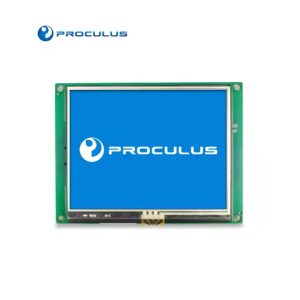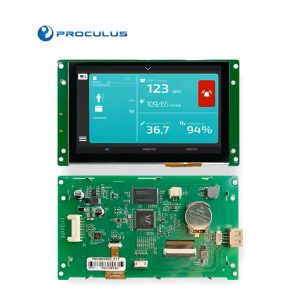Mastering Arduino Display Libraries and Programming for Proculus Displays
In the fascinating world of electronics and DIY projects, Arduino has cemented its place as a go-to platform for enthusiasts and professionals alike. One of the most intriguing aspects of Arduino projects is the use of various displays to convey information, create visual effects, and even interact with users. In this blog, we’ll delve into the exciting realm of display libraries and programming for Arduino displays, with a special focus on Proculus displays.
Choosing the Right Display for Your Arduino Project
Before we dive into the intricacies of display libraries and programming, it’s essential to select the right display for your Arduino project. Proculus, a well-known brand in the electronics industry, offers a diverse range of displays that cater to different needs.
Proculus displays come in various types, including OLED, TFT, LCD, and LED displays. Each type has its unique characteristics, such as size, resolution, color depth, and interface. When selecting a Proculus display, consider factors like your project’s requirements, available space, and budget.
Understanding Display Libraries for Arduino
Display libraries are essential tools for simplifying the process of interfacing with Proculus displays on Arduino. These libraries provide pre-written functions and methods that allow you to control the display without getting into the nitty-gritty details of low-level hardware communication.
Popular display libraries like Adafruit GFX, TFT_eSPI, and U8g2 offer compatibility with Proculus displays and many other display types. Depending on your chosen Proculus display, you may need to install a specific library to ensure seamless integration with your Arduino project.
Programming Proculus Displays with Arduino
Now that you’ve selected the perfect Proculus display and installed the required library let’s explore how to program it using Arduino. Here are some key steps to get you started:
-
Initialize the Display: Begin by initializing the display object in your Arduino sketch, specifying the pins and settings required for your Proculus display.
-
Display Content: Use the library’s functions to draw shapes, text, and images on the screen. Proculus displays offer excellent clarity and vibrant colors, making your creations visually appealing.
-
User Interaction: Depending on your project, you may need to incorporate touchscreens, buttons, or other input methods. Ensure your Arduino code can detect and respond to user interactions effectively.
-
Real-time Updates: Proculus displays can display real-time data, making them suitable for applications like weather stations, IoT dashboards, and more. Implement a mechanism to update the display content as needed.
Troubleshooting Common Display Issues

No matter how experienced you are, debugging issues with your Proculus display on Arduino can be a bit challenging. Here are some common problems you might encounter and tips on how to troubleshoot them:
-
No Display: If your Proculus display remains blank, check the connections, power supply, and ensure that you’ve initialized the display correctly in your code.
-
Flickering or Artifacts: Flickering or artifacts on the display can result from electrical noise or incorrect initialization. Verify your connections and code for any anomalies.
-
Touchscreen Calibration: If you’re using a touchscreen Proculus display, calibration is crucial for accurate touch recognition. Follow the manufacturer’s guidelines for calibration.
-
Low Frame Rate: If your animations or updates appear sluggish, optimize your code by reducing unnecessary calculations and rendering operations.
Elevating Your Arduino Projects with Proculus Displays
Proculus displays, combined with the power of Arduino and display libraries, enable you to create stunning and interactive projects. Whether you’re building a weather station, a gaming device, or an IoT dashboard, understanding how to work with Proculus displays is a valuable skill.In this blog, we’ve explored the importance of choosing the right Proculus display, understanding display libraries, programming Proculus displays with Arduino, and troubleshooting common issues. Armed with this knowledge, you’re well on your way to mastering the art of creating captivating Arduino projects that feature eye-catching Proculus displays. So, roll up your sleeves, pick your Proculus display, and embark on your next electrifying Arduino adventure!

 English
English

